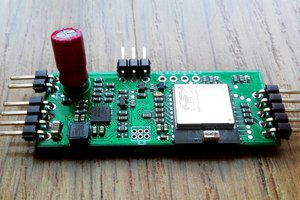The Inspiration
In 2018, I volunteered to help an NGO named Pollinate Group in India to facilitate energy and essential need solutions for urban poorer communities. Over 256 million people live on less than $1.90 a day in India and Nepal.
The organisation helped develop new ways to provide energy, light and cooking needs for urban communities that struggled to meet their basic needs. Two things I learned during that time that inspired Project Zephyrus were:
- Most communities have little to no power
- Most communities were nomadic, moving every few months or years requiring semi-portable appliances
The Hackaday 2022 Project design is an opportunity to help address two of these critical problems by designing a new wind turbine designed to alleviate these two concerns for poorer communities and implement a new low-cost solution for power generation with global implications.
Project Zephyrus
Named after the Greek God of the West Wind, Zephyrus is a semi-portable vertical wind turbine that focuses on low-cost design, cheaper shipping, and ease of implementation. Two of the primary components are universal building materials that can be sourced locally:
- The wind blades are thin wood panels (such as plywood)
- The axis base is a standard wooden tool handle (such as a shovel or rake handle)
The decision to implement materials that can be found locally in almost all regions of the world means that Project Zephyrus can be shipped with fewer components, reducing the overall cost. Additionally, this helps with longevity with easy to replace components if they become damaged, providing an opportunity to generate more power for longer.
By creating a semi-portable design with wooden components, communities can package up the design and it can be set up with relative ease in all areas. The choice of a vertical axis turbine is based on assumed lower wind speeds on the ground and in built-up areas, increasing power potential for generation.
My experience with low-cost power has been primarily solar due to the modular design of the components. However, wind technology has proven to provide higher generation capacity but has not seen small designs due to the overall cost to produce, shipping fees and implementation. I strongly believe that Project Zephyrus will address these concerns, lowering the cost of electricity outside solar hours
Main Components Base
The main component base is a metal box containing a battery pack, BMS, and motor that connects through a 2-gear axis system to the wind turbine. A hole through the top of the component's base secures the axis through to the ground and allows for the wind blades and plates to slide on and off with relative ease.
The internal electronics are waterproofed inside with a combination of output opportunities. USB power output, as well as 12v direct DC, allows for reliable powering for small electronics such as standard lights and portable devices. We are also testing opportunities to accept DC power input to charge the batteries, enabling solar modules to attach to the primary battery in the component's base, capturing additional power generation during solar hours.
My Experience
I am a 26-year old that graduated as a renewable energy engineer in Sydney Australia. My studies covered a significant volume of renewable technology such as biomass, wave power, solar thermal and of course wind and solar.
I have electrical experience designing solar and battery management solutions and projects such as portable weather stations for farms, google home controlled hidden bookshelves, an automated cocktail machine and much more.
Project Timeline
Project Zephyrus is currently a 3D design to ensure the criteria of the Hackday 2022 Project are sufficiently met. As reflected in this brief, the design reflects a combination of thorough analysis and previous small-scale generation experience. The Engineering Dads would be thrilled to see this project...
Read more » Uncle Toby and Aquaman
Uncle Toby and Aquaman
 Jurist
Jurist
 Jay Doscher
Jay Doscher
 Anteneh Gashaw
Anteneh Gashaw
 PUNiSH3R
PUNiSH3R